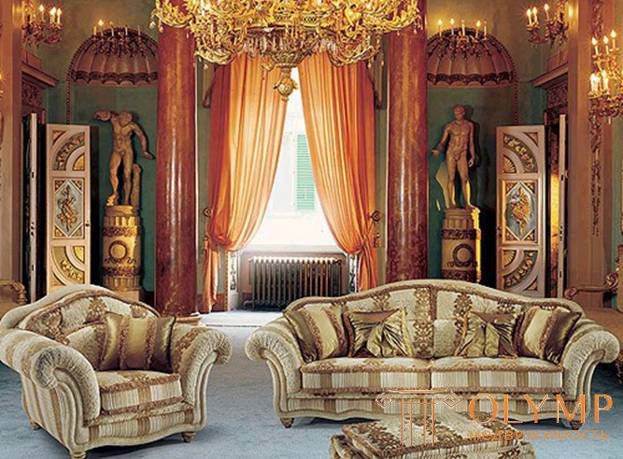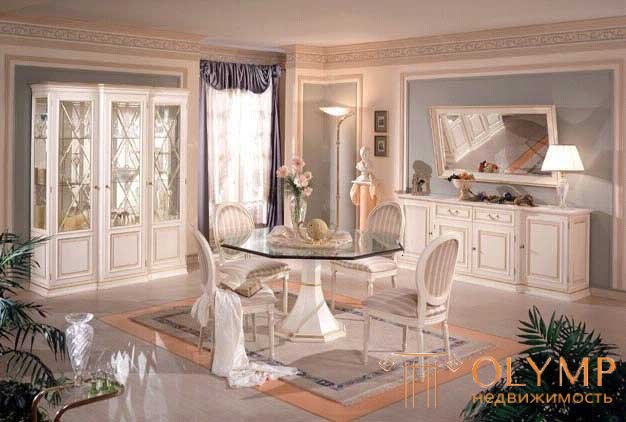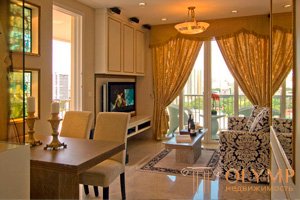

Tired of the pomp of the dark Middle Ages, its sublime moralized forms, mankind again turned to the lost ideals of Antiquity.
The internal structure of residential and palace buildings of the Renaissance was distinguished by clarity and simplicity of the location of the premises.
The walls most often had a high below - usually an oak paneled panel; painting was made higher up on the plastered surface, in the ceremonial rooms - frescoes, in some cases plot-themed or ornamental using plant motives. Woven tapestries that were hung on the walls were also common. They contained narrative compositions with an ornamental frame, which included sometimes well-drawn emblematic and heraldic motifs.
In the treatment of the upper part of the walls, the arcade motif on the columns or the entablature with a stucco frieze, which is characteristic of the early Italian Renaissance, was often introduced.

Special attention was paid to the framing of the doors, which were decorated in the ceremonial rooms with platbands and ended with arched or triangular pediments. A characteristic element of the rooms was a fireplace with a “hipped” crown.
In living rooms, in particular sleeping rooms, the emphasis was sometimes shifted to draperies, while furniture retreated into the background. Images of draperies are often found in miniatures, reproducing the interiors of that time.
Compared with the medieval furniture becomes more diverse in types. Basically, it was placed along the walls. There was only a centrally set table and in the sleeping rooms a bed, which was placed, as a rule, perpendicular to the wall. Perhaps the main element of furniture decoration were chests - boxes.
A significant role in the decoration of the interior was played by a bed - without a canopy, with four high carved corner posts or without them, but with two backs, at the headboard and in the “legs”.
The floors were covered with tiles with a geometric repeating ornamental pattern, sometimes they had a simple chess breakdown.
Small items of decoration - household and decorative - in the interiors are few. These were mainly lamps, candlesticks - usually copper or earthenware (majolica) vases, in which plants were planted that were placed on the windows. Decorative plates and dishes were often displayed on the shelves.
Architecturally crafted niches for relief or volumetric sculptural images of Our Lady and Saints were made in the walls. These niches often had closing flaps. 
Что бы оставить комментарий войдите
Комментарии (0)